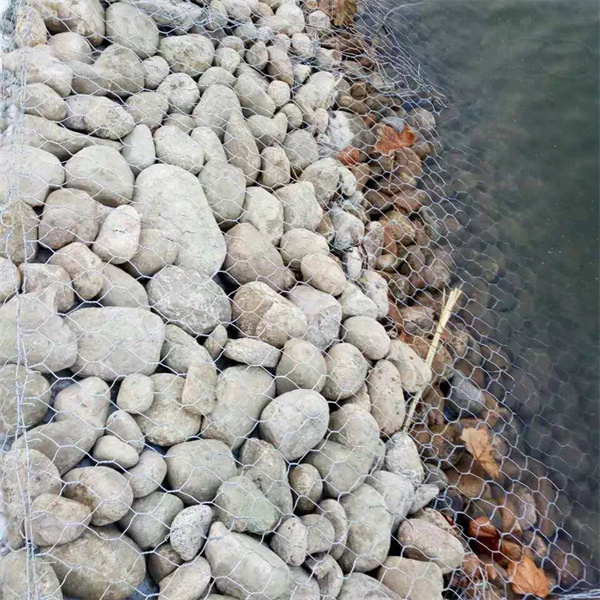okt . 13, 2024 15:55 Back to list
best gabion wall construction
Best Gabion Wall Construction
Gabion walls are an increasingly popular solution for landscaping and engineering projects due to their aesthetic appeal and excellent structural integrity. Made from wire baskets filled with stones or other materials, these walls serve a variety of purposes, including erosion control, property boundaries, and decorative elements in gardens. This article outlines the essential steps and considerations involved in constructing the best gabion walls for your project.
Understanding Gabion Walls
Gabion walls are essentially structures that consist of stacked wire mesh cages filled with natural stones, rock, or even recycled materials. These walls are not only functional but also environmentally friendly, as they can blend seamlessly with the natural landscape. The design of gabion walls allows for natural drainage, which can prevent water accumulation and subsequent erosion.
Planning and Design
The first step in constructing a gabion wall is careful planning and design. You need to consider several factors, such as the intended purpose of the wall, the height and length, and the local environment.
1. Purpose of the Wall Determine whether you want a retaining wall, a decorative feature, or a boundary wall. This will influence the size and type of gabion baskets to use.
2. Height and Length Gabion walls can reach significant heights, but the taller the wall, the more structural support it requires. It's also crucial to adhere to local regulations regarding wall height and design.
3. Local Environment Evaluate the soil conditions, drainage patterns, and vegetation. This will help in selecting the right type of stones and placement to ensure stability and longevity.
Materials Selection
Choosing high-quality materials is essential for a sound gabion wall
. The main components are the wire mesh and the filler stones.1. Wire Mesh Gabion baskets are typically made of steel wire, galvanized to resist corrosion. Look for heavy-duty options that can withstand adverse weather conditions. Plastic-coated wire mesh is also available for extra durability and aesthetic appeal.
best gabion wall construction

2. Filler Stones The type of stones you choose will affect both the appearance and functionality of the wall. Natural, angular stones lock together better than rounded pebbles. Additionally, consider the color and texture of the stones to achieve a visually appealing result.
Construction Process
Once you have your design and materials, the construction process begins. Here are the step-by-step instructions for building a gabion wall
1. Site Preparation Clear the area where the wall will be built. Level the ground and ensure proper drainage to prevent water pooling behind the wall.
2. Foundation Although gabion walls can function without a concrete foundation, especially in smaller applications, a firm base is recommended for taller structures. You may dig a trench or create a leveled surface using gravel.
3. Assembling the Baskets Assemble the gabion baskets on site. Most come pre-fabricated, but you will need to connect sections as necessary. Make sure the mesh is tight and secure.
4. Filling the Baskets Fill the baskets with stones. It's advisable to start from the back and work your way forward to establish stability. Avoid overfilling; the rocks should not be overly compacted as drainage needs must be considered.
5. Topping Off and Securing After filling, you may want to top off the wall with smaller stones or soil to blend it into the landscape. Make sure to secure the baskets with ties or additional wire as necessary.
Maintenance
Gabion walls are relatively low maintenance. However, regular inspections for shifting stones and rust on the wire mesh are advisable. To maintain the aesthetic quality, occasional cleaning might be required to remove dirt or debris.
Conclusion
Constructing a gabion wall can be a rewarding project that enhances both the beauty and functionality of your outdoor spaces. By following proper design, material selection, and construction techniques, you can create a durable and attractive wall that serves its purpose for years to come. Whether you are looking to control erosion, create a garden feature, or delineate property boundaries, gabion walls offer a versatile and sustainable solution.
-
HESCO Gabion Baskets for Coastal Erosion Prevention
NewsAug.22,2025
-
Longevity and Durability of River Rock Gabion Walls
NewsAug.22,2025
-
How to Integrate Gabion 3D Walls in Urban Planning
NewsAug.22,2025
-
Reno Mattress Gabion Applications in Civil Engineering
NewsAug.22,2025
-
How to Install Wire Mesh for Gabion Baskets Properly
NewsAug.22,2025
-
Best Materials for Filling a Chain Link Gabion
NewsAug.22,2025
-
Wire Mesh Thickness Impact on Gabion Wall Load Bearing
NewsAug.12,2025






